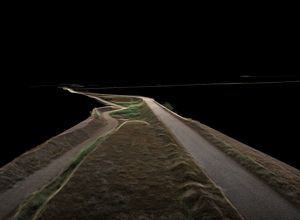
Why choose us




RISK REDUCTION
We are fully committed to upholding the highest standards of quality, environmental protection, and safety, always acting in the best interest of both our team and our clients.
This drives us to constantly research, develop, and implement innovations to enhance the services we provide.
NETF DRONE stands for reliable and cost-effective solutions for large-scale, high-risk, and complex surveys and inspections.
COST REDUCTION
Surveys and Mapping
VALUABLE DATA
QUICK TURNAROUND
High-precision surveys and mapping using aerial photogrammetry, LiDAR, and multispectral sensors to generate detailed representations of terrain and structures, fully integrable into GIS, CAD, and BIM environments.
BUSINESS CONTINUITY

FOR FURTHER INFORMATION
Tel. : +39 388 10 79 439
E- mail: info.it@netf.eu
Offices:
Via Monte Napoleone 8, 20121 Milan - Italy
Via De Virgilii 2, 66100 Chieti - Italy
New standards of precision
Technological division of NETF Milano Srls,
registered in the “UAS Operator List” pursuant to Implementing Regulation (EU) No. 947/2019 on the d-Flight portal.
We specialize in high-precision topographic surveys and digital mapping, carried out through the combined use of aerial photogrammetry, LiDAR (Light Detection and Ranging) technology, and multispectral sensors, selected based on the nature of the surveyed area, project goals, and operational conditions. This technological flexibility allows us to acquire reliable data quickly, safely, and with minimal environmental impact.
We deliver accurate, high-resolution geospatial data, including point clouds, digital elevation models (DEM), contour lines, and orthophotos, essential for preliminary and final design, geotechnical analysis, environmental modeling, and territorial planning. The quality and density of the data acquired enable us to meet high standards, even in the most complex environments.
We also support landslide and hydrogeological risk monitoring, providing detailed geospatial data for the study and mapping of landslides, slopes, and ground instability, even in hard-to-reach areas. Our surveys are a valuable tool for public agencies, designers, and geologists working on risk prevention and mitigation planning.
All generated products are fully compatible with CAD, GIS, and BIM environments, and our team also handles 3D modeling and technical survey processing, ensuring seamless integration into design and engineering workflows. We provide solid support for inspection, control, and documentation activities, delivering reliable, accurate, and ready-to-use data.
Our surveys are applied in several strategic fields: wind and photovoltaic plants, BESS (Battery Energy Storage Systems), high and medium voltage power lines, road and railway infrastructures, industrial plants, utility networks, and complex civil works. The accuracy of the data collected provides added value from the earliest phases of analysis, feasibility studies, and executive design.
Thanks to the use of industrial drones and advanced methodologies, we are able to operate even in hard-to-access areas as well as confined spaces, ensuring high safety standards, reduced survey time, and maximum operational efficiency. We offer tailor-made solutions for every technical need, adapting to the specific requirements of each project with expertise, flexibility, and an integrated vision.
Our experience in topographic surveys
.png)
In this video, we showcase the operational phases of a topographic survey carried out using our state-of-the-art equipment.
From field operations to data processing in CAD environments, we ensure precision and efficiency in every project.
Thanks to the integration of aerial photogrammetry and LiDAR, we achieve a detailed view of the terrain, supporting civil engineering, infrastructure, renewable energy, and planning activities.
Photo Gallery
.jpeg)
.jpeg)
.jpeg)


.png)
